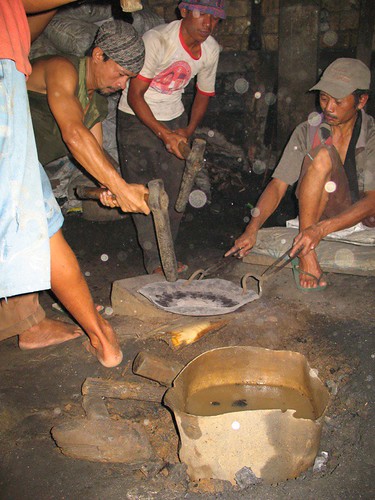Two Graveyards

one Dutch, one Javanese;
one frozen in time, one always in-progress.
At long last, we wandered through the Javanese side.
The Rectangle
The Dutch cemetery is geometric & constantly manicured. The dead are foreign soldiers from old wars, visited by virtually no one. Being a cemetery, it doesn’t feel empty exactly, but its ghosts would seem to be keeping a stiff upper lip about things. There’s a pretty white chapel with a columbarium, stained glass & a lily pond. Most of the headstones are simple white crosses, many rows of which read: Onbekend—Unknown—who are protected behind the gates as fiercely as the rest.
The Ramai
The other graveyard is RAMAI. This is a great word. Ramai means boisterous, active, busy, close-together, exciting, loud. The atmospheres of good parties, crowded waiting rooms, Graeagle, & busy traffic can all be ramai, & Indonesians like things that way. Space is at a premium, too. Which is to say, there is a lot more going on in the cemetery than burials.
First off, it is a graveyard, of course—some regular, humpy headstones, some plots set with stone crypts shaped like bathtubs, bus stops, benches, rafts, most of them overgrown with vines & grass upwards to my shoulder, a few of these humbuggily topped with lattice & barbed wire, which I suspect are meant to keep off children. Many of the headstones are graffitied, multi-ethnic (Chinese, European, Indonesian), & old.
But it’s also:
2. A commuter road for foot & motorcycle traffic,
3. A de facto trash dump,
4. Which makes it a perfect chicken, dog, cat & goat feed lot,
5. A social field around which kakilima food carts gather,
6. A shanty town full of shacks where families live,
7. A ball field (including a uniquely immaculate tennis / basketball / soccer / ping-pong table ball surface),
8. A school yard, &
9. Being one of the only wide-open air spaces in the area: a major kite flying field. We went at 5 pm, when all the school kids & workers were coming home; the place is full of people. And it’s an oddly cheerful space.
Bule Masuk Kampung II
So this experience was similar to our walk through the Cikini kampung, which I wrote about here in January [Walking: Gringos Enter the Hood]. As the crow flies, this was a simple, rectangular route. The road through the graveyard, which you can see in the photo above, is red mud & compacted garbage. It doesn’t stink; at night we can see the trash fires burning. Most people we pass are school kids in bright uniforms, kite boys, snack vendors, or people riding motorcycles home from work.
The farther in we go, the more women we see: grandmothers & mothers with babies, some feeding their toddlers mash right there on a gravestone. Several women bring their babies forth specifically to point us out up close, gently whispering brand new words into little ears, teaching them to identify People Like Us.
“Selamat sore,” I say, exhausting half of my Indonesian words by saying Good afternoon. “Apa kabar?” How are you? Now I’m done. For me, it’s all nodding & smiling from here on out.
But really, just showing up at the end of the road is enough to make about fifteen little girls zip up & dare one another to say Hello. All of them look pretty clean, healthy & happy for kids who seem literally to live in a dump. All of them look very ready for us to do something—anything—funny. They want us to say Hello back to them in English, & when we do they laugh because we’re talking to them. The brave one who dared to say Hi gets shoved & mocked good-naturedly all around.
As before, in the train-tracks kampung, the space is so dense with life that it’s too much to see or remember at once, & it’s hard to describe with any justice. Ornate bird cages hang in unexpected places: from a flowering tree in the graveyard; from a tilted green lamppost over the street; under the rusted eaves of a shack. A splendid rooster lands, colorful & dominant, & with a flourish claims a heap for his own. Little shops & carts of unidentifiable knick-knacks are tucked into corners everywhere. Wedged in among the red tile roofed houses on the adjacent street is a tiny mosque with a garland of loudspeakers on its minaret that must deafen the people who live adjacent to it. Scrawny kittens with docked or broken tails defend their hiding places from one another. It’s not crowded but there are people of all ages everywhere: napping on a gravestone, flying kites, playing ball.
To be honest, from the outside: everyone I saw there seemed to be having a much more social, relaxed & enjoyable evening than most anybody I ever see coming home from a day at work or school.
We walked back out to the street along a paved kampung gangway adjacent to the graveyard. The wall above the drainage ditch was stenciled every few yards with the plaintive:










